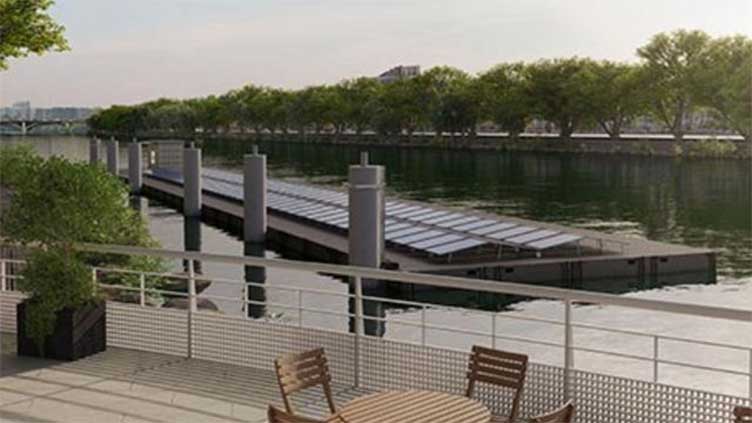World's largest floating solar plant powers Paris Olympic village

Technology
The plant offers advantage over traditional generator-based power solutions
(Web Desk) - In a groundbreaking move for sustainable energy, the world’s largest floating and mobile solar power plant has been unveiled along the banks of the Seine in Paris.
This state-of-the-art photovoltaic installation has been leased specifically for the Paris 2024 Olympic and Paralympic Games by EDF ENR, a subsidiary of the renowned energy company EDF.
It is set to transform the way green energy is utilized at major events.
Located at the central and vibrant Olympic and Paralympic Square in the Athletes’ Village, the plant provides clean electricity to this bustling hub where athletes, journalists, and visitors converge.
The site also features shops and enormous screens broadcasting live competition footage.
Spanning an impressive 470 square meters and boasting a capacity of 78 kWp—equivalent to the energy consumption of 94 apartments—the temporary solar power plant operates on a self-consumption model.
This means it does not feed electricity into the national grid but instead adjusts its output in real-time to match the consumption needs of the site.
Its key feature is its flexibility and ease of setup. The entire system can be deployed and dismantled with remarkable efficiency.
The process to get this solar plant up and running is a marvel of modern engineering. Within less than 24 hours, the installation is fully operational. The setup begins with opening the shipping container that houses the plant, followed by unfolding the pre-wired solar wings.
These wings are then connected and plugged into the container, which houses the inverter, protection systems, and all necessary electrical components.
The introduction of this floating solar plant offers a significant advantage over traditional generator-based power solutions for large-scale events like the Olympics, trade fairs, and festivals.
The plant’s mobility and ease of setup make it an attractive option for providing temporary power at sites that are not connected to the public electricity grid.


